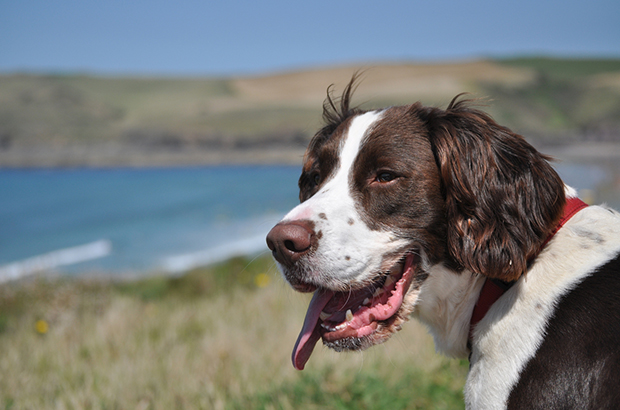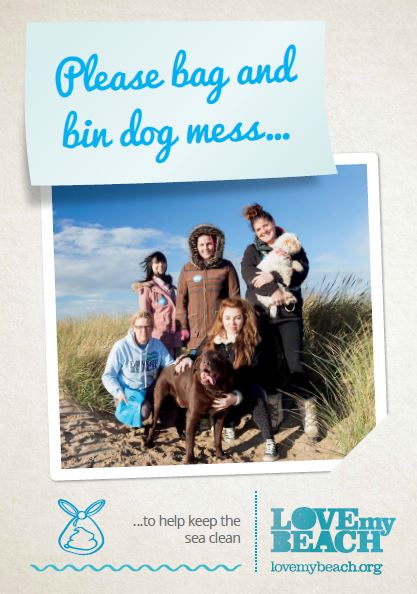Dog mess should never be left on beaches to be washed away by the tide. It contains high levels of bacteria that can affect water quality and pose a risk to public health.
Some people believe that leaving dog poo on the beach is OK because the tide washes it away, however this natural disposal technique isn’t the best thing for our beaches and seas. Bacteria present in dog poo is potentially harmful to beach users and can affect water quality.
- Dog poo contains high levels of bacteria. Just one gram of dog poo diluted in one million litres of sea water (that’s enough to fill six double decker buses or two and half standard swimming pools) could pose a health risk to bathers
- Less than half a teaspoon of dog mess contains enough bacteria to potentially affect the classification of a bathing water
- Dog mess contains high levels of the two types of bacteria that are measured when testing bathing water quality and can determine whether the classification of a bathing water is Excellent, Good, Sufficient or Poor
That’s why organisations and campaigns from across the UK are uniting this week for #binit4beaches; a campaign focused on reducing pollution and litter at the beach and calling for dog owners to help with ongoing improvements.
Millions of people head to the UK’s beaches to relax, paddle and swim every year and we want water quality to be the best it can be. Last year 98.3% of England’s bathing waters met the tough standards. By working together, we can continue to help protect and improve water quality. So, if you visit the beach with your dog please do your bit to help by bagging and binning your dog poo, making the beach safe for everyone to enjoy.
See the bathing water quality rating for your local area on the Environment Agency’s interactive map.

